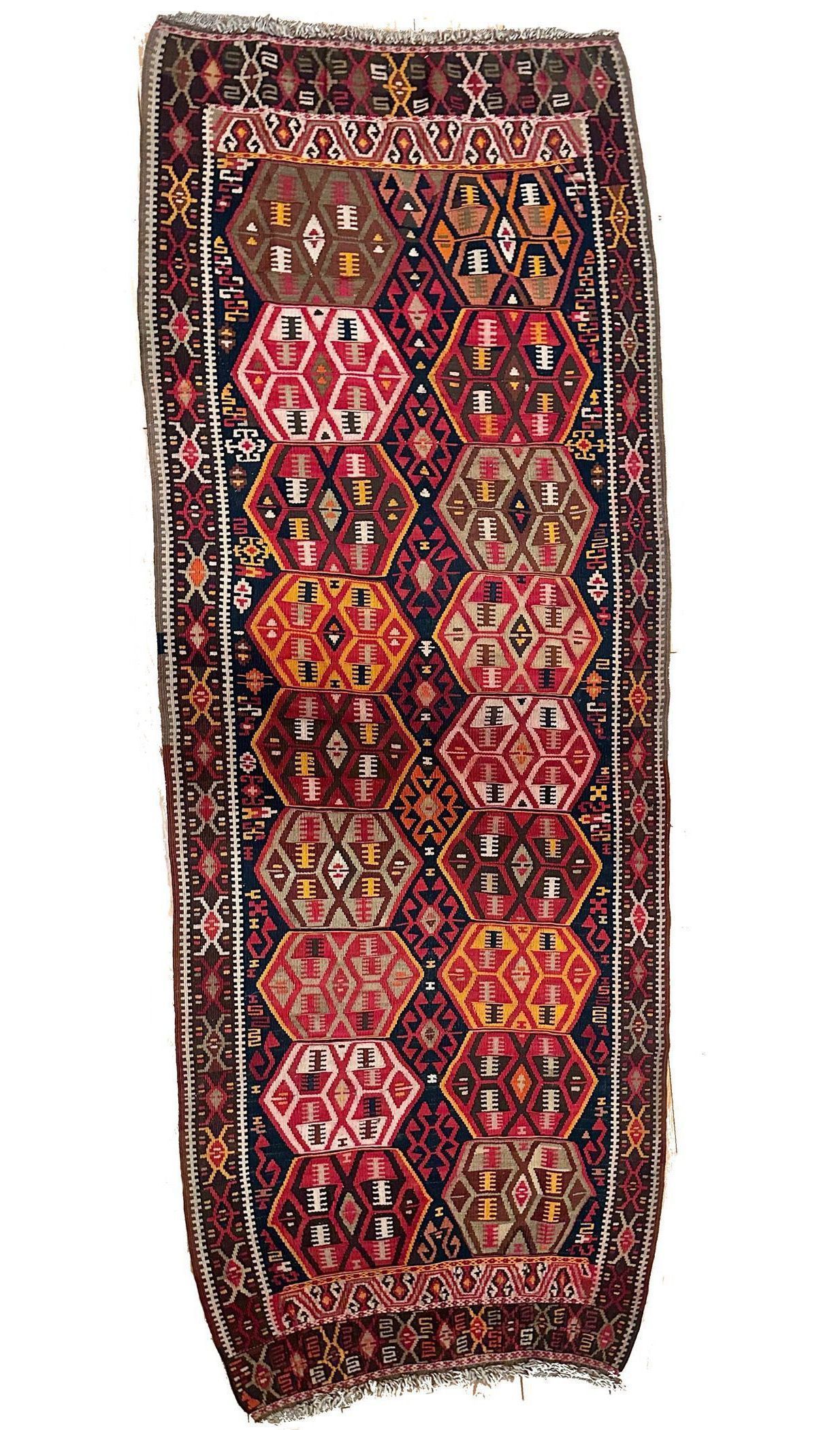Name/Title
Carpet Basen (c. 1910)Description
Kagizman style carpets are kilim rugs from the Kağızman district of Kars but can be found in nearby areas like Erzurum as well. These hand-woven rugs feature intricate patterns and vibrant colors. Latch-hooked devices often alternate with diamond shapes, while hexagonal medallions are arranged in a chain running the length of the carpet. Some rugs are dyed using vegetable or natural dyes.
The carpet is from Basen (now Pasinler) and was woven around 1910. Before the Armenian Genocide, 16,740 Armenians lived in the Basen region, which included 57 Armenian villages, 16 active Armenian Apostolic churches, one inhabited Armenian monastery, and 20 Armenian schools. The inhabitants of Basen spoke the Erzurum (Karin) dialect of Armenian, similar to the dialect spoken today by the people of Javakhk (now southern Georgia, near the Armenian border).
When World War I began, Russian forces advanced to the Basen plain but quickly retreated, along with much of the local Armenian population. However, about 4,000 Armenians remained and were subsequently deported. Between 1915 and 1917, the area was re-occupied by Russia, but the Ottoman army regained control of the town on March 13, 1918.
It is likely that this carpet was taken by a family seeking refuge in Russian Armenia during occupation of the area by Russian forces at the start of World War I:
“(…) the rural areas of the vilayet of Erzerum were emptied of their Armenian population well before the cities. Most of the population of the sancak of Bayazid found refuge in the Caucasus, whereas the last villages of the Pasın district began to be ‘displaced toward the interior’ late in March [1915]. However, the towns and villages in Pasın lying near the Russian border that were evacuated in December 1914 or January 1915 were not spared atrocities. Half of the livestock (800 sheep, 1,400 cows, and 230 water buffalo) belonging to the villages of Khosroveran, where 40 families earned a living mainly from animal husbandry, were seized during the military requisitions in fall 1914 without the compensation provided for by the law. Eleven men were massacred during the Turkish army’s retreat, the Mgrdichian family was Islamized, seven people were killed while fleeing toward the Russian border, and five children were abandoned en route. In the neighboring village of Ishkhu, where 1,100 Armenians lived before the war, 70 percent of the community’s livestock (2,600 cows and 2,700 sheep) was confiscated to meet the army’s needs at the very outset of the mobilization. The village also contributed 45 conscripts and 20 to 30 porters to the war effort; the porters carried supplies to the front on their backs. Moreover, 30 adults were massacred on the spot during the January 1915 debacle, another 45 people died on the way to the Caucasus, and eight children were abandoned along the way.”Created By
garenkazanc@hotmail.comCreate Date
October 18, 2024Updated By
garenkazanc@hotmail.comUpdate Date
February 3, 2025
